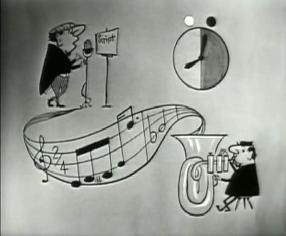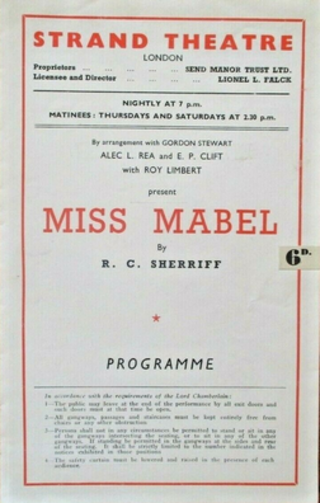Related Research Articles

Hancock's Half Hour was a BBC radio comedy, and later television comedy series, broadcast from 1954 to 1961 and written by Ray Galton and Alan Simpson. The series starred Tony Hancock, with Sidney James; the radio version also co-starred, at various times, Moira Lister, Andrée Melly, Hattie Jacques, Bill Kerr and Kenneth Williams. The final television series, renamed simply Hancock, starred Hancock alone.
Swallows Parade was an Australian radio and television series. The radio version was broadcast by Melbourne station 3DB in the 1950s, and was also heard on other Major Broadcasting Network stations on a Thursday evening, with auditions being held on Tuesdays. It was presented in front of a live audience from various towns and cities with Major Network outlets.
The Astor Show was an Australian television series which aired in 1958 on Melbourne station GTV-9. In the series, the cast danced to and mimed hit recordings. The series ended with the 31 August 1958 broadcast. The timeslot of the series was then occupied for several weeks by a series of specials starring Shirley Abicair, and later by an American drama series.
Find the Link is a game show format which had versions produced in the U.K. and in Australia. It involved a celebrity panel trying to determine the link between contestants. It was quite common at the time for British formats to have versions done for Australian television, with other examples including Picture Page and Café Continental.
It Pays to Be Funny was an Australian television comedy game show. In Sydney it aired on station ATN-7, while in Melbourne it aired on GTV-9. The half-hour show was hosted Bob Dyer, who had previously hosted a version for radio on the Macquarie Radio Network.
Cool Cats Show was an Australian television series that aired live on Melbourne station HSV-7 from 1958 to 1960. When it debuted Australian series often aired on a single station, but this was becoming less common during the run of the series, as more shows began being shown in several cities as television spread across the country. The series is notable as an early example of an Australian television series aimed at teenagers. TV listings of the era described it as a "teenage studio dance" hosted by Don Bennetts with guest artists. The Ted Vining Trio is listed as appearing in several episodes.
Make Ours Music was an Australian music television series which aired from 1958 to circa 1961 on ABC. Produced in Sydney, it also aired in Melbourne. Originally a half-hour series, it later expanded to an hour. Make Ours Music featured a mix of live songs and dance numbers.
That's My Desire is an Australian television game show which ran from 1958 to 1960 on Melbourne station HSV-7. Hosted by Danny Webb, it was a panel game. The half-hour series changed time-slot several times. At one point it aired at 4:45PM, it later aired at 3:00PM, then at 4:00PM, and finally at 2:30PM.
Picture Page was an early Australian television series which aired from 1956 to 1957 on ABC. It was hosted by Valerie Cooney.
Women's World was an Australian television series which aired from 1956 to 1963 on ABC. Originally broadcast in Sydney and later Melbourne, it would appear the last couple years of the series were only broadcast in Sydney.
Any Questions was an Australian television series which aired on the ABC from 1958 to 1963. The series presented a panel, who would discuss various topics in each episode. ABC produced several discussion series during the 1950s and 1960s. Originally aired on Thursdays, it later moved to Wednesdays. Some of the editions were made in Sydney, while others were made in Melbourne.
The Critics was an Australian television series which aired on ABC. Two versions were produced, one for Sydney and another for Melbourne. Debuting 1959, the Melbourne version ran to 1960, while the Sydney version ran to circa 1962.
Australia's Amateur Hour was a talent quest, broadcast on Australian AM radio from 1940 to 1958, and a television spinoff, which ran for less than a year, 1957–1958.
The Johnny Gredula Show was an Australian television variety series which aired from 18 April 1957 to 20 February 1958 on ABC. Produced in Sydney, the series also aired in Melbourne via kinescope recordings. Regulars included the Noel Gilmore Quintet and Margaret Day.
Tele-Variety was a four-part Australian television variety series which aired fortnightly on Sydney station ABN-2 on Saturdays from 7 December 1957 to 18 January 1958. It alternated in the time-slot with Look Who's Dropped In. The producer was Harry Pringle. It is worth noting that ABC series of the period often had shorter seasons than those on commercial television.
Binnie Time is an Australian television series, which aired on Melbourne station GTV-9 from c. 2 October 1958 – c. 3 April 1959. The 15-minute weekly daytime series was originally aired on Thursdays, but the last few episodes were broadcast on Fridays.

Miss Mabel is a 1948 stage play by R. C. Sherriff. It has been adapted for television at least five times. The original production premiered at the Theatre Royal, Brighton before transferring to London's West End where it ran for 180 performances between 23 November 1948 and 30 April 1949, initially at the Duchess Theatre before switching to the Strand Theatre. The West End cast included Richard Warner, Clive Morton and Mary Jerrold.
Meet is an early Australian television series which aired on ABC during 1957. The series consisted of interviews in a 15-minute time-slot, with a single person interviewed in each episode. It aired live in Melbourne, with telerecordings made of the broadcasts so it could be shown in Sydney. In Melbourne it aired on Mondays. Following the end of the series, it was followed up with an interview series titled People.
Tomorrow's World is a 1959 Australian educational television series. Intended to be viewed in schools, it aired on ABC Television in a 20-minute time-slot. Subject matters included plankton, a game between an "electronic brain" and a group of children, and atomic power. It is not known if any of the episodes still exist, given the wiping of the era. The series was part of ABC's experiments which began in 1958 to see whether television could be used to provide educational programming for viewing in classrooms. The programming was produced by the Sydney and Melbourne stations of ABC, who shared their programs with each other via kinescopes/telerecordings made of the shows. It is not known when these classroom series began being shown on ABC's stations in other cities. They were among the earliest documentary television series produced for Australian television.
Science Today is an Australian television series which aired in 1958 on ABC. It was an educational series for schools, with subjects including the magnifying glass and microscope, the weather bureau, animal life found at the seashore, among others. It aired at 3:30PM on Wednesdays in Melbourne, and aired live. At least some of the episodes were also shown in Sydney.
References
- ↑ "Harry Dearth in TV Show". Radio/TV Supplement. The Age . Melbourne. 4 July 1958. p. 1. Retrieved 23 May 2013.
- ↑ "Wednesday Television". Radio/TV Supplement. The Age . Melbourne. 23 April 1959. p. 11. Retrieved 23 May 2013.